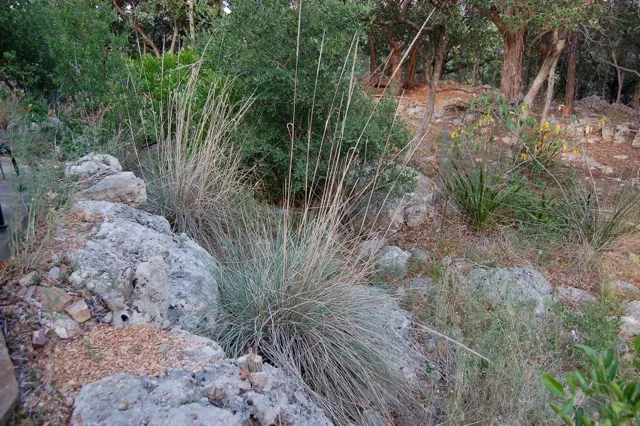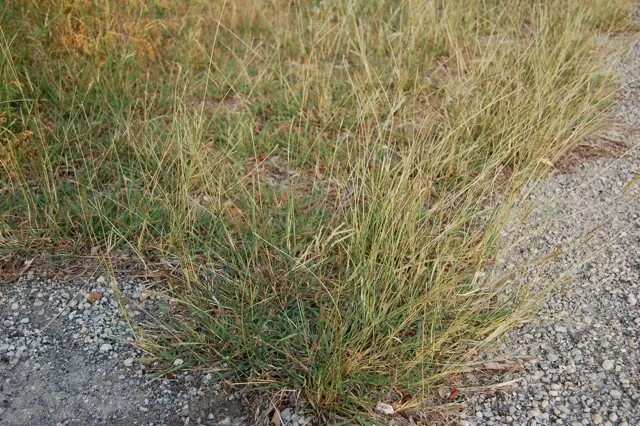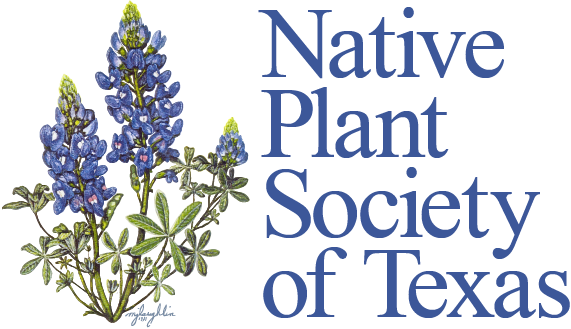By Delmar Cain
It may come as a shock to some of my birder friends, but I hunted quail in my younger days. Around Gladewater quail were present but not abundant by any standard. If I saw one covey in an afternoon, I thought it was a successful hunt. So when my family moved to Austin, which was nearer to better quail country, I went every chance I could get until we moved east in 1996. Even then I knew that quail numbers were declining.
So when Ed Rogers sent me an article last month about “a native plant restoration revolution” that is spreading north and west from South Texas, it did not escape my attention that one source of ranch owner concern is a decline in quail densities in areas dominated by exotic grasses. I have hunted in South Texas and I know how important quail hunting is to the culture of that part of Texas. It would be like taking away the hind legs of a grasshopper— after that it’s just not much of a hopper.

But I was equally interested to read an article only two weeks later in the New York Times examining the decline in quail numbers across the country. Although the quail has been one of the most studied wildlife species, most conservation efforts have fallen short in stopping their decline and in many parts of their range they have disappeared. What’s going on and is there hope?
The first thing that struck me is the two sources of information. How often do you think that you will read an article from the New York Times and one from the Livestock Weekly aligning on an issue of conservation? Probably not very often in the past, but, hopefully, we will see more of it in the future. On the decline of the quail, there seems to be agreement on at least one of the main problems—the loss of sufficiently large areas of native habitat with the emphasis on native grasses and forbs.
In South Texas and in many other areas of the country ranchers who desired to increase the productivity of their land for livestock turned away from native grasses and started planting exotic grasses brought from other parts of the world. Farmers in other parts of the country learned to use every inch of land for their crops eliminating the nesting and hiding places that the quail had used along the fencerows. Government agencies promoted nonnative grasses for erosion control on highways and for hay production. But those same exotic grasses, which grow so quickly, don’t always stay in the right of way or in your neighbor’s field. And more importantly according to the research those same exotics do a very poor job of supporting not only the quail but also other grassland birds and native wildlife in general.

The Caesar Kleberg Wildlife Research Institute at Texas A&M University-Kingsville is one of the premier wildlife research organizations in the country, with a mission to bring science-based management and conservation of wildlife to the area. Their research has documented a 50 percent decline in quail populations in areas dominated by exotic grasses, such as buffelgrass, Bermuda grass, Lehmann’s lovegrass, and the one we see everywhere in our area, King Ranch bluestem. The birds don’t eat the seeds of the exotics and the exotics create monocultures where other forbs cannot grow.
Exotics across the United States are creating similar problems. In his book, “Bringing Nature Home: How You Can Sustain Wildlife With Native Plants”, Douglas Tallamy discusses the connection between native plants, the specialized insects that use only particular plants for laying eggs and as a food source, and the birds that depend upon the protein from eating the insects. Even for seed eating birds the early growth necessary to get the young out of the nest comes mainly from larva and adult insects. Plants and trees that have been imported by growers for esthetic purposes for our yards or for landscaping our public places generally don’t feed anything and are out of place in the ecological system. And that is why the native plants are crucial and their loss or diminution is of concern.
When I was hunting quail I went to a quail seminar at Texas A&M University-Kingsville. Before I went to the seminar, I thought that quail were plentiful in a year when the conditions were right for the growth of the forbs, which were the source of the seeds, which the birds ate. But at the seminar I learned that unless the conditions were right for the growth of larva and insects, the small quail, which leave the nest quickly, do not survive to eat the seeds. Exotic grasses may feed the livestock, but they don’t support much else in the local ecological system. Is the damage permanent?
It’s not clear. Now that management of wildlife has replaced livestock production in large areas of South Texas, more attention is being focused on restoring the native plants that supported the abundant wildlife of the past. Unfortunately, the problem of restoration is much more difficult than it was to clear and replant with exotics. One of the main problems is the same one facing native plant growers all over the state. Where do you get the native plants or native seeds to do the restoration, since the wholesale growers generally make available to the retailers the things they grow rather than what we might like to have?
South Texas Natives, a program initiated by the Caesar Kleberg Wildlife Research Institute, has worked on the problem in South Texas by gathering seeds and by partnering with the commercial seed industry in evaluating and in releasing superior species for the commercial market, which includes TxDoT. Giving buyers a choice to grow native is a good first step. In our area native plant seeds can be purchased at Native American Seeds in Junction.
With eleven natural regions in Texas and with each having different habitats and growing conditions, there is a lot of work to be done. But hopefully the kind of revolution that is happening in South Texas is one that will take root throughout the state, so that our grandchildren will not have lost a precious treasure and will recognize in the early morning the call of the bobwhite.
(Link to the Caesar Kleberg Wildlife Research Institute at Texas A&M University-Kingsville South Texas Natives publication archives: http://ckwri.tamuk.edu/research-programs/south-texas-natives/publications/archived-news-articles/
The article referred to is titled “South Texas Native Plant Model to Expand to other Eco-Regions” from the Livestock Weekly, January 20, 2011. The article from the New York Times, titled “Restoring Tradition of Quail Hunting”, May 19, 2011, appeared on page B 14.)
